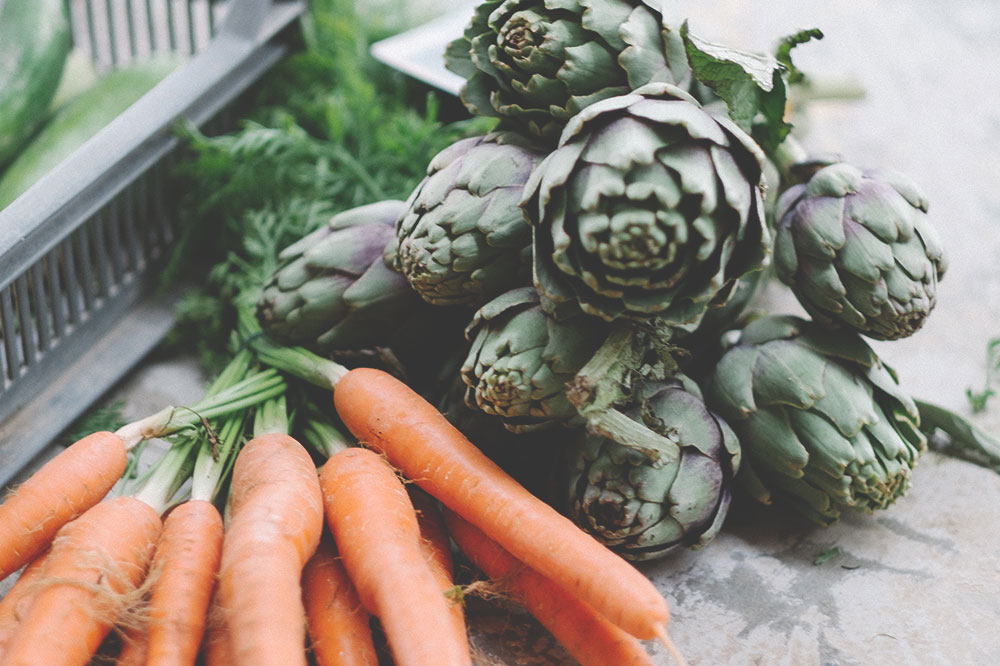Making veggies a part of your daily life is a lot easier than you think. If you’re up for the challenge, keep these tips in mind to add some colorful variety to your meals.
BY: JEANNE REILLY, MS, RD
You hear it all the time: Eat vegetables with every meal. Eat 5+ servings of colorful vegetables every day.
How is that even possible, and why do you need so much?
Many of us grew up swallowing our peas like bitter pills with milk at dinner, and gagging at the mere thought of brussels sprouts as we were told “Eat your vegetables”! Hopefully, your taste buds have developed a bit since then, your palate has expanded ever so slightly, and that abhorrence of veggies has subsided to allow a little bit more variety into your diet. If you’re trying to stay mindful of how often you’re incorporating veggies, consider the following tips to get you there.
WHO
From kids to adults, veggies are some of the most nutrient-dense and satisfying ways to fill up. It’s all in how we prepare it, and finding new ways to add variety so we don’t get easily bored of the same ones.
WHAT
Colorful is what we’re aiming for since it typically indicates there are more antioxidants and phytonutrients, although colorless veggies definitely also have a place in our diet. From dark leafy greens to cruciferous vegetables to squash, there are endless ways to get in your veggies.
WHY
Nutrients. Minerals. Vitamins. Fiber. Antioxidants. Good digestion. Phytonutrients. Cancer-fighting. Eyesight preserving. The list goes on and on. Vegetables are perhaps one of the only food groups that for the vast majority of people, the more they eat the better! If you want the science behind why you should eat more vegetables, you don’t have to look far to see that there’s a lot of existing research that supports its role and place in our lives.
WHERE
No matter where you are, you can get fresh, frozen, canned or home-grown produce year-round. Start a garden and have produce most of the year, depending on your location. Consider finding and visiting a local farmer’s market, or support a Community Supported Agriculture (CSA).
WHEN
At home
Get prepping, get cooking, or outsource if chopping and cooking veggies just isn’t your thing. There are many convenient options at grocery stores that offer pre-cooked veggies like roasted brussels sprouts and beets, a salad bar, and a whole plethora of other prepared vegetable options. The caveat here is that the more prep you don’t do, the more you will have to pay, in general.
At work
Whether you work at home, in an office, or are in a car most of the day, all it takes is a little prep time on weekends, and you can have veggies on hand for snacks and meals. Pack your lunch and snacks at home, and keep them in the shared fridge at work. Consider keeping a cooler in your car if you’re on the road, or going from one place to another all day long.
At restaurants
When you’re eating out, consider asking for double the veggies. Roasted, steamed, or baked are always delicious, so don’t be afraid to ask.
While traveling
Bringing cut up veggies on planes, trains and your car will save you from the perils of feeling ‘hangry’. It’s filling, and you won’t have to scramble around looking for a grocery store to stop at. Stock up on prepared veggies to stash in your hotel mini-fridge or cooler with ice packs. You can even find freeze-dried or baked veggie snacks now that don’t have to be refrigerated.
Remember, it’s all about finding variety and flexibility, and making it fun!
Adapted from the original article.
HEADER IMAGE: DAVID VAZQUEZ
Jeanne Reilly, MS, RD is a San Diego-based Registered Dietitian empowering parents to help their children develop lifelong healthy relationships with food and their bodies. She is dedicated to helping parents overcome the confusion and challenges of society-imposed rules in family nutrition and body image. Learn more and connect with her at Jeanne Reilly, RD.

